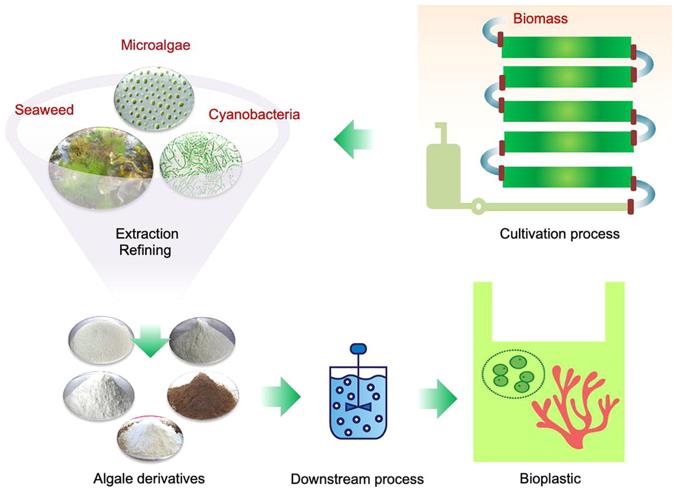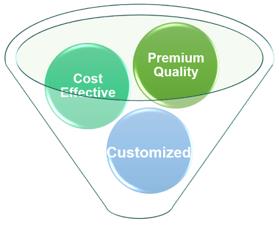Polyhydroxyalkanoates Biosynthesis Service from Algae
Polyhydroxyalkanoates, also named PHAs, are polyesters produced by many microorganisms in nature and are used to produce biodegradable bioplastics.
As an expert in algae research, Lifeasible has top-notched devices and a dedicated team to offer polyhydroxyalkanoates biosynthesis services from algae.
Plastics and Bioplastics
Plastic is an essential man-made product for modern society. It is well known that plastic is popular because of its unique properties such as light weight, flexibility, water resistance, heat resistance, electrical resistance, and ease of production.

Traditional Plastic
Plastics can be made up of petroleum-based polymers, which include several familiar plastics such as polyethylene (PE), polypropylene (PP), polyethylene terephthalate (PET), and others. Plastic waste has become a hot topic of increasing concern due to its potential impact on terrestrial ecosystems, the atmosphere, freshwater, and the marine environment.

Bioplastics
More recently, research has focused on bioplastics as a potential direction for achieving sustainable products and reducing environmental impact. Synthetic plastics made from renewable resources are bioplastics, such as terrestrial crop polymers, algae polymers, and bacterial polymers.
Bioplastics Made from Polyhydroxyalkanoates
Algae, especially microalgae, show great potential as a regenerative resource. As an important part of everyday life, plastic packaging can be made from PHA of cyanobacterial origin.
 Fig.2 Bioplastic from Algae. (Dang, B. T., et al., 2022, Bioresource Technology)
Fig.2 Bioplastic from Algae. (Dang, B. T., et al., 2022, Bioresource Technology)
- Two Types of Polyhydroxyalkanoates
Based on the number of carbons in the PHA structure, the monomeric precursors can be divided into short chain length (scl-PHA, ≤ 5 carbons) and medium chain length PHA (mcl-PHA, 6-14 carbons). Scl-PHA is widely used in food packaging and disposable products. The first compound of the scl-PHA group is poly(3-hydroxybutyric acid), denoted as P(3HB) or PHB. - Polyhydroxyalkanoates from Cyanobacteria
PHAs are aliphatic polyesters that can be accumulated by heterotrophic bacteria as intracellular particles, mainly through natural fermentation processes or from recombinant E. coli as a genetically engineered pathway. Unlike prokaryotes, Cyanobacteria can produce PHA as intracellular carbon and energy storage compounds while they provide O2 and consume CO2 through algae-like photosynthesis.
Our Services
As an important source of PHA, algae are now one of the important subjects of research. With many years of experience in algae research, Lifeasible can offer professional PHA biosynthesis services from algae.
- Diverse Available Algal strains
| Compound | Algal Strains | |
| Polyhydroxyalkanoates (PHA) | Synechococcus elongates | Spirulina sp. LEB-18 |
| Synechococcus subsalsus | Chlorella sp. | |
| Oscillatoria salina | Leptolyngbya valderiana | |
| Synechococcus elongatus | ||
| Polyhydroxybutyrate (PHB) | Spirulina sp. LEB-18 | Aulosira fertilissima |
| Scytonema geitleri | ||
| Poly (3-hydroxybutyrate) (P3HB) | Synechocystis salina | |
| 3 Poly (3-hydroxybutyrate-co-3-hydroxyvalerate) | Nostoc muscorum Agardh | |
| Poly-β-hydroxybutyrate | Nostoc muscorum | |
- Optimize Cultivation Conditions
In cyanobacteria of the genera Synechocystis, Synechoccus, Arthrospira (Spirulina), and Nostoc, both photosynthetic and heterotrophic conditions can stimulate the accumulation of PHB. In addition, we will increase PHB production through N stimulation and P deficiency. - Professional Extraction Methods
The extraction efficiency of PHB is one of the key factors affecting its yield. We have a professional team that uses sodium hypochlorite, methanol, and hot chloroform to extract PHB efficiently. - Fine-Grained Quantitative Approaches
Phenotypic detection of intracellular PHB particles is performed by staining cells with Sudan Black B. A colony-based PCR assay is also available to rapidly determine whether the cyanobacteria of interest contain PHA synthase.

Why Choose Us
Lifeasible has the professional equipment and experienced teams to support our PHA biosynthesis services from algae. Please contact us for more information.
Reference
- Dang, B. T., Bui, X. T., Tran, D. P., Ngo, H. H., Nghiem, L. D., Nguyen, P. T., ... & Varjani, S. (2022). Current application of algae derivatives for bioplastic production: A review. Bioresource Technology, 126698.
Our services are for research use only and not for any clinical use.